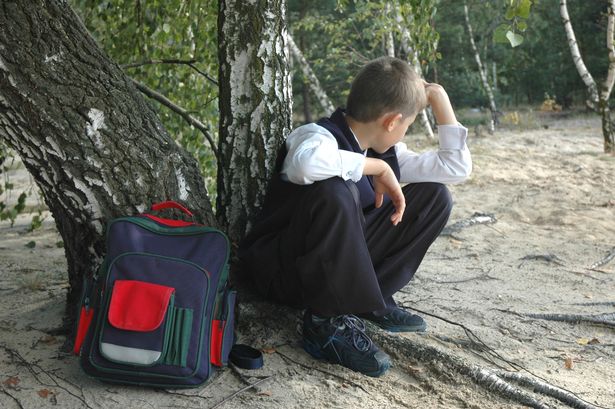
Everyday the number of displaced children arriving in England grows and is likely to increase with the great exodus from Ukraine. Sadly, these the children will be arriving into the context of a huge scandal within our borders which they could easily add to – the scandal of the missing children.
A shocking report by the Children’s Commissioner on Missing Children had two alarming findings:
- No one knows how many children there are in England, there are hundreds that have never been tracked by Local Authorities
- Of the known children – those registered to attend schools – 1.7 million did not attend regularly in the Autumn Tern 2021, and 22% are now persistently absent.
Whilst the Department for Education has demonstrated that persistent absence is improving there are several other school-based factors as to why children are not attending mainstream schools:
Off-rolling: Schools remove children from their register to home schooling on either a par tor full-time basis – generally coinciding with public examinations (league tables) and caused by attendance or behaviour issues2,3 . According to a House of Commons these numbers are difficult to measure4.
Permanent or Fixed Period Exclusions: Reported pre-pandemic 2018/19 as 7,894 Permanent, 438,265 Fixed Period Exclusions, the main reason being behaviour.
Managed Moves: Children are moved from one school to another, normally alternative provision, in 2016/17 there were 9,000 such moves6 , 2,300 did not remain in school.
Societal Issues: There are also societal issues as to why children are missing or at risk of not Everyday the number of misplaced attending school: Child refugees – over half the refugees in the world are children7 the highest number being in England where there is c.4,000 children separated from their parents who are seeking asylum.
Run-Aways: In 2021, the Children’s Society found that over 10,000 children run away each year, 144 each day, 2 in 3 are not reported to the police8.
Children Looked After: Numbers have increased every year since 2010, with over 102,000 currently in care, of which only 3,000 are likely to be adopted, taking over a year for each placement. Children regularly change placement, school, and social worker 5.
Domestic Violence: Over 14% of children aged 18 and under are impacted by domestic violence.
Special Educational Needs and Disability: Over half a million children are identified with limited identification for children living in poorer homes, provision is limited in these areas.
Poverty: Currently 4.3 million children live in poverty in the UK, 3 in 10,. There has been a 107% increase in 202014
Reporting on these issues is not new. In 2012, a report on Missing Children received a response from the then Children’s Commissioner1https://www.gov.uk/government/publications/report-from-the-joint-inquiry-into-children-who-go-missing-from-care5 who cited many of the above factors impacting on children’s education. In 2014, Impetus published a study focusing on 14 – 24-year-olds . They stated that according to Department for Education figures 16-year-olds would have fallen out of education. Worse still in 2014 there were 120,188 Millennium Kids at risk of becoming Not in Education, Employment or Training (NEET)16. Many of the children featured in these reports will remain ‘missing’.
There are three structural changes that would decrease the number of all missing children:
1. All children receive a unique number for universal use at birth or entry into the country, as suggested by the current Children’s Commissioner in 2022
2. Pupil Premium funding is outcomes driven, as suggested by Impetus in 2014
3. For the system to support all children social care, health and education provision should have a single protocol.
There are currently a plethora of separate government initiatives and changes to policy that relate to factors impacting on missing children, as illustrated by: –
- An independent review of Children’s Social Care in Englahttps://www.gov.uk/government/publications/report-from-the-joint-inquiry-into-children-who-go-missing-from-carend17, to be concluded in Spring 2022
- Major Review into Support for Children with Special Educational Needs18, begun in 2019
- Refugee status and process including Ukraine19, announced 4th March 2022 10
- Children Missing From Home | The Children’s Society (childrenssociety.org.uk)8
- Children looked after in England including adoptions, Reporting Year 20219
- Explore education statistics – GOV.UK (explore-education-statistics.service.gov.uk)10
- Impact on children and young people – Womens Aid11
- Special educational needs and disabilities (parliament.uk)12
- Identifying pupils with special educational needs and disabilities – Education Policy Institute (epi.org.uk)13
To address the major issue of ‘missing children’ would require government departments to work together in the interest of all children. The only way forward is the appointment of a Minister for Children tasked with uniting government departments in a clear focus on children, a view held by the Children’s Alliance22 and All-Party Parliamentary Group for Children.
Sonia Blandford, Professor of Social Mobility, Plymouth Marjon University
References
- No one knows how many children in England, says children’s commissioner | Schools | The Guardian
- Off-rolling in English schools (parliament.uk)
- https://assets.publishing.service.gov.uk/government/uploads/system/uploads/attachment_data/file/936524/
Ofsted_offrolling_report_YouGov_090519.pdf - https://commonslibrary.parliament.uk/research-briefings/cbp-8444/
- https://explore-education-statistics.service.gov.uk/find-statistics/permanent-and-fixed-period-exclusions-inengland/2018-19
- Managed moves vs permanent exclusions: Do outcomes differ? – FFT Education Datalab
- Refugee facts – The Separated Child Foundation
- Children Missing From Home | The Children’s Society (childrenssociety.org.uk)
- Children looked after in England including adoptions, Reporting Year 2021
- Explore education statistics –GOV.UK (explore-education-statistics.service.gov.uk)
- Impact on children and young people – Womens Aid
- Special educational needs and disabilities (parliament.uk)
- Identifying pupils with special educational needs and disabilities – Education Policy Institute (epi.org.uk)
- https://www.childrenssociety.org.uk/what-we-do/our-work/ending-child-poverty
- https://www.childrenscommissioner.gov.uk/wp-content/uploads/2017/07/Inquiry-into-children-who-gomissing-or-run-away-from-care.pdf
- Make-NEETs-History-Report_ImpetusPEF_January-2014.pdf
- Home – The Independent Review of Children’s Social Care (independent-review.uk)
- https://www.gov.uk/government/news/major-review-into-support-for-children-with-special-educationalneeds
- Immigration information for Ukrainians in the UK, British nationals and their family members (accessible) –
GOV.UK (www.gov.uk) - DfE tsar Tom Bennett to oversee £10m ‘behaviour network’ (schoolsweek.co.uk)
- https://childrensalliance.org.uk/
- https://www.ncb.org.uk/what-we-do/influencing-policy/all-party-parliamentary-group-children-appgc
Register for free
No Credit Card required
- Register for free
- Free TeachingTimes Report every month